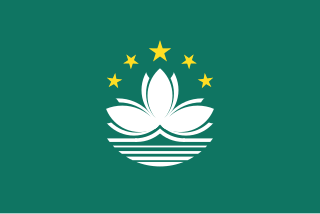
Macau or Macao is a special administrative region of the People's Republic of China. With a population of about 680,000 and an area of 32.9 km2 (12.7 sq mi), it is the most densely populated region in the world.
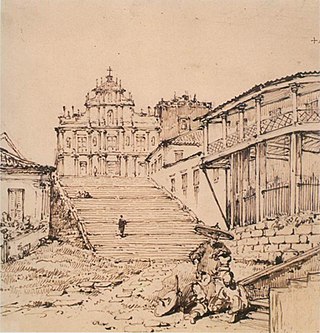
Macau is a special administrative region (SAR) of the People's Republic of China. It was leased to Portugal in 1557 as a trading post in exchange for a symbolic annual rent of 500 tael. Despite remaining under Chinese sovereignty and authority, the Portuguese came to consider and administer Macau as a de facto colony. Following the signing of the Treaty of Nanking between China and Britain in 1842, and the signing of treaties between China and foreign powers during the 1860s, establishing the benefit of "the most favoured nation" for them, the Portuguese attempted to conclude a similar treaty in 1862, but the Chinese refused, owing to a misunderstanding over the sovereignty of Macau. In 1887 the Portuguese finally managed to secure an agreement from China that Macau was Portuguese territory. In 1999 it was handed over to China. Macau was the last extant European territory in continental Asia.
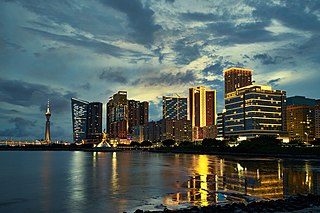
The economy of Macau has remained one of the most open in the world since its handover to China in 1999. Apparel exports and gambling-related tourism are mainstays of the economy. Since Macau has little arable land and few natural resources, it depends on mainland China for most of its food, fresh water, and energy imports. Japan and Hong Kong are the main suppliers of raw materials and capital goods. Although Macau was hit hard by the 1997–98 Asian financial crisis and the early 2000s recession, its economy grew approximately 13.1% annually on average between 2001 and 2006. Macau is a full Member of the World Trade Organization. Public security has greatly improved after handover to the People's Republic of China. With the tax revenue from the profitable gambling industry, the Macau government is able to introduce the social welfare program of 15 years of free education to all Macau citizens. In 2015, Macau's economy saw a sharp decrease due to the reduced spending by visitors from Mainland China since the Anti-corruption campaign under Xi Jinping.

Harriet Elisabeth Beecher Stowe was an American author and abolitionist. She came from the religious Beecher family and wrote the popular novel Uncle Tom's Cabin (1852), which depicts the harsh conditions experienced by enslaved African Americans. The book reached an audience of millions as a novel and play, and became influential in the United States and in Great Britain, energizing anti-slavery forces in the American North, while provoking widespread anger in the South. Stowe wrote 30 books, including novels, three travel memoirs, and collections of articles and letters. She was influential both for her writings as well as for her public stances and debates on social issues of the day.

Harriet Martineau was an English social theorist. She wrote from a sociological, holistic, religious and feminine angle, translated works by Auguste Comte, and, rarely for a woman writer at the time, earned enough to support herself. The young Princess Victoria enjoyed her work and invited her to her 1838 coronation. Martineau advised "a focus on all [society's] aspects, including key political, religious, and social institutions". She applied thorough analysis to women's status under men. The novelist Margaret Oliphant called her "a born lecturer and politician... less distinctively affected by her sex than perhaps any other, male or female, of her generation."
The Macanese people are a multiracial East Asian ethnic group that originated in Macau in the 16th century, consisting of people of predominantly mixed Cantonese and Portuguese as well as Malay, Japanese, English, Dutch, Sinhalese, and Indian ancestry.

The egg tart is a kind of custard tart found in Chinese cuisine, derived from the English custard tart and Portuguese pastel de nata. The dish consists of an outer pastry crust filled with egg custard. Egg tarts are often served at dim sum restaurants, Chinese bakeries and cha chaan tengs.
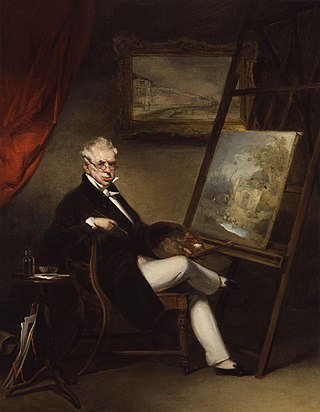
George Chinnery was an English painter who spent most of his life in Asia, especially India and southern China.

The Thirteen Factories, also known as the Canton Factories, was a neighbourhood along the Pearl River in southwestern Guangzhou (Canton) in the Qing Empire from c. 1684 to 1856 around modern day Xiguan, in Guangzhou's Liwan District. These warehouses and stores were the principal and sole legal site of most Western trade with China from 1757 to 1842. The factories were destroyed by fire in 1822 by accident, in 1841 amid the First Opium War, and in 1856 at the onset of the Second Opium War. The factories' importance diminished after the opening of the treaty ports and the end of the Canton System under the terms of the 1842 Anglo-Chinese Treaty of Nanking. After the Second Opium War, the factories were not rebuilt at their former site south of Guangzhou's old walled city but moved, first to Henan Island across the Pearl River and then to Shamian Island south of Guangzhou's western suburbs. Their former site is now part of Guangzhou Cultural Park.

Abiel Abbot Low was an American entrepreneur, businessman, trader and philanthropist who gained most of his fortune from the China trade, importing teas, porcelains, and silk, and building and operating a fleet of reputable clipper ships.

William Henry Low was an American entrepreneur, businessman and trader from Salem, Massachusetts, who was one of the American pioneers of the Old China Trade. In 1828, having settled in Canton, China, Low was admitted as a partner of the Russell & Co. trading company, as a replacement chosen by founding partner Philip Ammidon. Senior partner of the firm, he retired in 1833 after having recruited his nephew, Abiel Abbot Low, and died in the Cape of Good Hope the following year; while returning home in the company of his wife and niece, the diarist Harriet Low

The Sino-Portuguese Treaty of Peking was a trade unequal treaty between the Kingdom of Portugal and the Qing dynasty of China, signed on 1 December 1887. It is counted by the Chinese as among the unequal treaties in the aftermath of the Second Opium War. The treaty gave Portugal perpetual colonial rights to Macau on the condition that Portugal would cooperate in efforts to end the smuggling of opium.
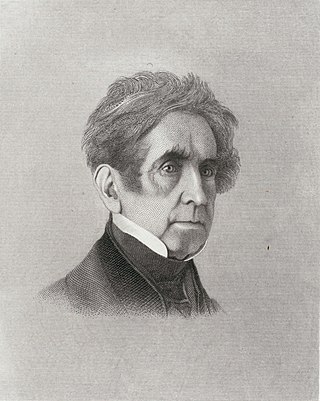
William Burke Wood was an American theater manager and actor. He was brought as a child to New York City, where he began life as a clerk. Feeling that he had a vocation for the stage, he set out for Annapolis, Maryland, with a capital of three doubloons, and through the courtesy of Manager Wignell, an old family friend, he made his first appearance there on 26 June 1798 as George Barnwell. He was partially successful, and began an engagement the same year in Philadelphia in Secrets Worth Knowing.

Thomas Beale was a Scottish naturalist, opium speculator and general merchant operating in the Far East during the 19th century.

Daniel Beale (1759–1842) was a Scottish merchant and fur trader active in the Far East mercantile centres of Bombay, Canton and Macau as well as at one time the Prussian consul in China.
William Wightman Wood was an American journalist, businessman, naturalist and poet based in Macau and Canton, China.
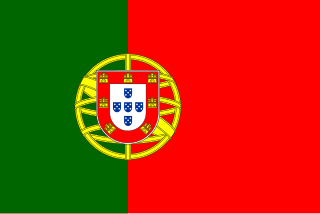
Macau was a Portuguese colony from the establishment of the first official Portuguese settlement of Macau in 1557 to its handover to China in 1999. It comprised the Municipality of Macau and the Municipality of Ilhas. Macau was both the first and last European holding in China.
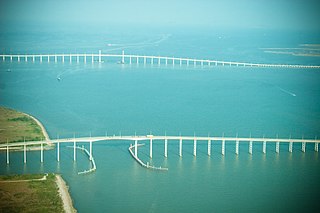
Praia Grande Bay or Nam Van, officially known as Ou Mun, is a bay in Macau, China. Located on the east side of the Macau Peninsula, it served as the chief promenade in Macau. It was the site of the governor's palace, the administrative offices, the consulates, and the leading commercial establishments. It has been credited as probably the "most depicted view of 19th-century Macau", and its most characteristic landmark for many years. The bay was confined by the Fortress of St. Francis in the north-east and the Fortress of Bomparto in the south-west. Only a few colonial buildings remain, and the landscape has been largely altered by land reclamation and high-rise buildings.

Eloise Harriet Stannard (1829–1915) was a British 19th century painter known for her still life work. She was one of only two notable women artists associated with the Norwich School of painters, Britain's first provincial art movement.

Mary Hillard Loines was a suffragist and civic worker, the daughter of writer Harriet Low.


















